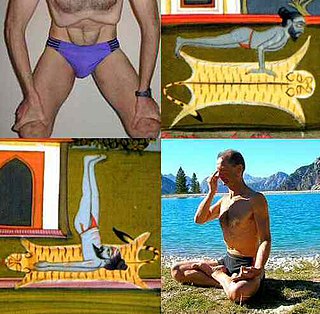
Hatha yoga is a branch of yoga that uses physical techniques to try to preserve and channel vital force or energy. The Sanskrit word हठ haṭha literally means "force", alluding to a system of physical techniques. Some hatha yoga style techniques can be traced back at least to the 1st-century CE, in texts such as the Hindu Sanskrit epics and Buddhism's Pali canon. The oldest dated text so far found to describe hatha yoga, the 11th-century Amṛtasiddhi, comes from a tantric Buddhist milieu. The oldest texts to use the terminology of hatha are also Vajrayana Buddhist. Hindu hatha yoga texts appear from the 11th century onward.

The Haṭha Yoga Pradīpikā is a classic fifteenth-century Sanskrit manual on haṭha yoga, written by Svātmārāma, who connects the teaching's lineage to Matsyendranath of the Nathas. It is among the most influential surviving texts on haṭha yoga, being one of the three classic texts alongside the Gheranda Samhita and the Shiva Samhita.

Nath, also called Natha, are a Shaiva sub-tradition within Hinduism in India and Nepal. A medieval movement, it combined ideas from Buddhism, Shaivism and Yoga traditions of the Indian subcontinent. The Naths have been a confederation of devotees who consider Shiva as their first lord or guru, with varying lists of additional gurus. Of these, the 9th or 10th century Matsyendranatha and the ideas and organization mainly developed by Gorakhnath are particularly important. Gorakhnath is considered the originator of the Nath Panth.
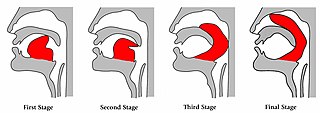
Khecarī mudrā is a hatha yoga practice carried out by curling the tip of the tongue back into the mouth until it reaches above the soft palate and into the nasal cavity. The tongue is made long enough to do this with many months of daily tongue stretching and, in some versions of the practice, by gradually severing the frenulum of the tongue with a sharp implement over a period of months.

Gorakhnath was a Hindu yogi, saint who was the founder of the Nath Hindu monastic movement in India. He is considered one of the two disciples of Matsyendranath. His followers are known as Jogi, Gorakhnathi, Darshani or Kanphata.

A bandha is a kriyā in Hatha Yoga, being a kind of internal mudra described as a "body lock," to lock the vital energy into the body. Bandha literally means bond, fetter, or "catching hold of".
Modern yoga is a wide range of yoga practices with differing purposes, encompassing in its various forms yoga philosophy derived from the Vedas, physical postures derived from Hatha yoga, devotional and tantra-based practices, and Hindu nation-building approaches.
The Haṭha Ratnāvalī is a Haṭha yoga text written in the 17th century by Srinivasa. It is one of the first texts to name 84 asanas, earlier texts having claimed as many without naming them. It describes 36 asanas.
The Joga Pradīpikā is a hatha yoga text by Ramanandi Jayatarama written in 1737 in a mixture of Hindi, Braj Bhasa, Khari Boli and forms close to Sanskrit. It presents 6 cleansing methods, 84 asanas, 24 mudras and 8 kumbhakas. The text is illustrated in an 1830 manuscript with 84 paintings of asanas, prepared about a hundred years after the text.
The Haṭhābhyāsapaddhati is a manual of Haṭha yoga written in Sanskrit in the 18th century, attributed to Kapāla Kuraṇṭaka; it is the only known work before modern yoga to describe elaborate sequences of asanas and survives in a single manuscript. It includes unusual elements such as rope poses.
The Amṛtasiddhi, written in a Buddhist environment in about the 11th century, is the earliest substantial text on what became haṭha yoga, though it does not mention the term. The work describes the role of bindu in the yogic body, and how to control it using the Mahamudra so as to achieve immortality (Amṛta). The implied model is that bindu is constantly lost from its store in the head, leading to death, but that it can be preserved by means of yogic practices. The text has Buddhist features, and makes use of metaphors from alchemy.
Mark Singleton is a scholar and practitioner of yoga. He studied yoga intensively in India, and became a qualified yoga teacher, until returning to England to study divinity and research the origins of modern postural yoga. His doctoral dissertation, which argued that posture-based forms of yoga represent a radical break from haṭha yoga tradition, with different goals, and an unprecedented emphasis on āsanas, was later published in book form as the widely-read Yoga Body.
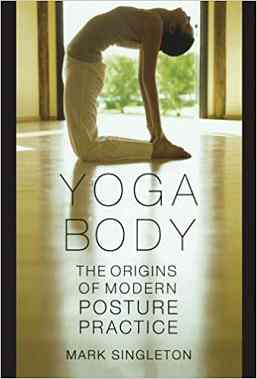
Yoga Body: The Origins of Modern Posture Practice is a 2010 book on yoga as exercise by the yoga scholar Mark Singleton. It is based on his PhD thesis, and argues that the yoga known worldwide is, in large part, a radical break from hatha yoga tradition, with different goals, and an unprecedented emphasis on asanas, many of them acquired in the 20th century. By the 19th century, the book explains, asanas and their ascetic practitioners were despised, and the yoga that Vivekananda brought to the West in the 1890s was asana-free. Yet, from the 1920s, an asana-based yoga emerged, with an emphasis on its health benefits, and flowing sequences (vinyasas) adapted from the gymnastics of the physical culture movement. This was encouraged by Indian nationalism, with the desire to present an image of health and strength.
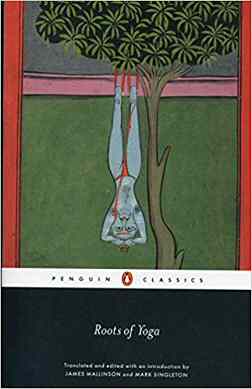
Roots of Yoga is a 2017 book of commentary and translations from over 100 ancient and medieval yoga texts, mainly written in Sanskrit but including several other languages, many not previously published, about the origins of yoga including practices such as āsana, mantra, and meditation, by the scholar-practitioners James Mallinson and Mark Singleton.

The Vivekamārtaṇḍa is an early Hatha yoga text, the first to combine tantric and ascetic yoga. Attributed to Goraknath, it was probably written in the 13th century. It emphasises mudras as the most important practice. The name means "Sun of Discernment". It teaches khecarīmudrā, mahāmudrā, viparītakaraṇī and the three bandhas. It teaches six chakras and the raising of Kundalinī by means of "fire yoga" (vahniyogena).
The Dattātreyayogaśāstra, a Vaisnava text probably composed in the 13th century CE, is the earliest text which provides a systematized form of Haṭha yoga under that name, and the earliest to place its yoga techniques under the name Haṭha.
The Yogabīja is an early Haṭha yoga text, from around the 14th century. It was the first text to propose the derivation of haṭha from the Sanskrit words for sun and moon, with multiple esoteric interpretations.
The Khechari Vidya, an early tantric text on Hatha yoga written around the 14th century, teaches only khecarīmudrā, one of several yogic seals or mudras, and is a major source for that method. This was meant to give the yogin access to stores of amrita in the body, and to raise Kundalinī via the six chakras.
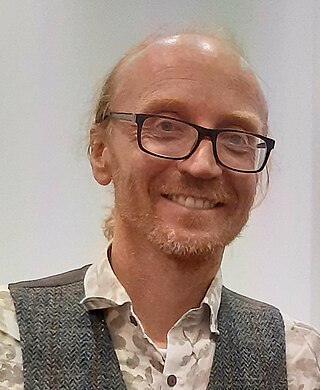
Jason Birch is a scholar of medieval haṭha yoga and a founding member of SOAS's Centre for Yoga Studies. His research includes locating and translating early yoga manuscripts, and preparing critical editions, such as of the Amaraugha.

The Gorakṣaśataka is an early text on Haṭha yoga text from the 11th-12th century, attributed to the sage Gorakṣa. It was the first to teach a technique for raising Kundalini called "the stimulation of Sarasvati", along with elaborate pranayama, breath control. It was written for an audience of ascetics.













